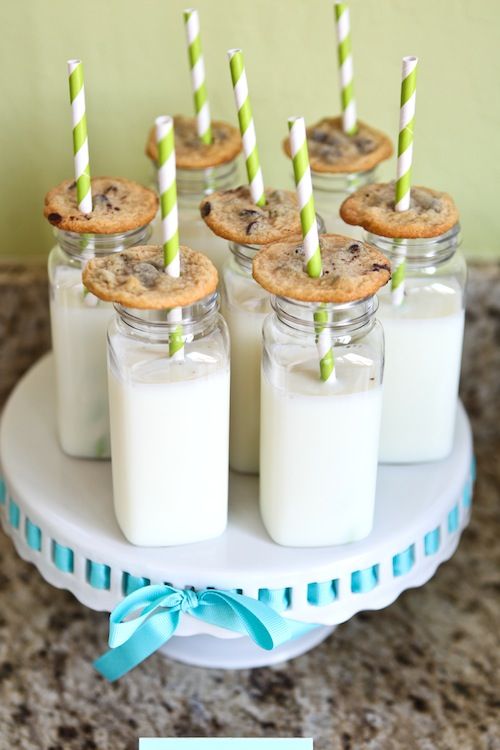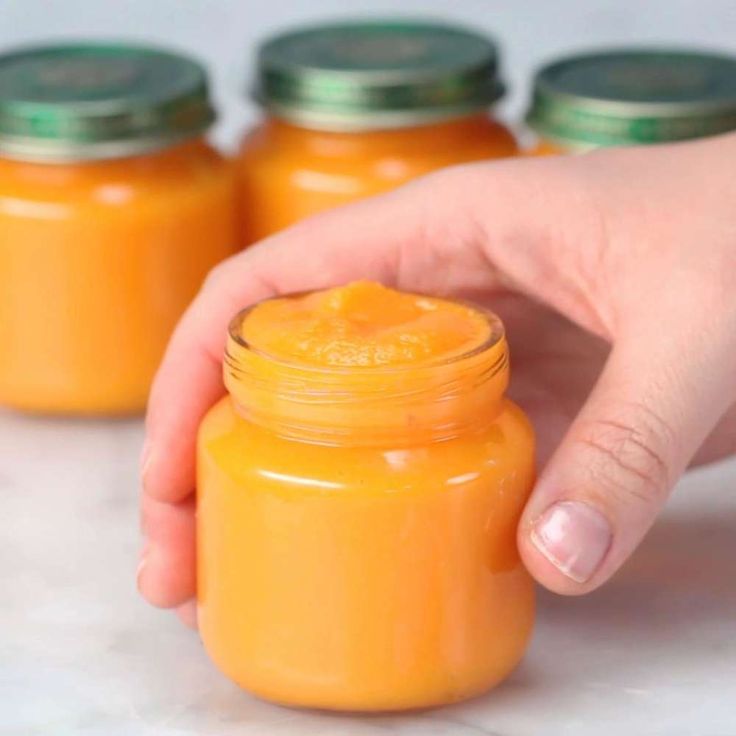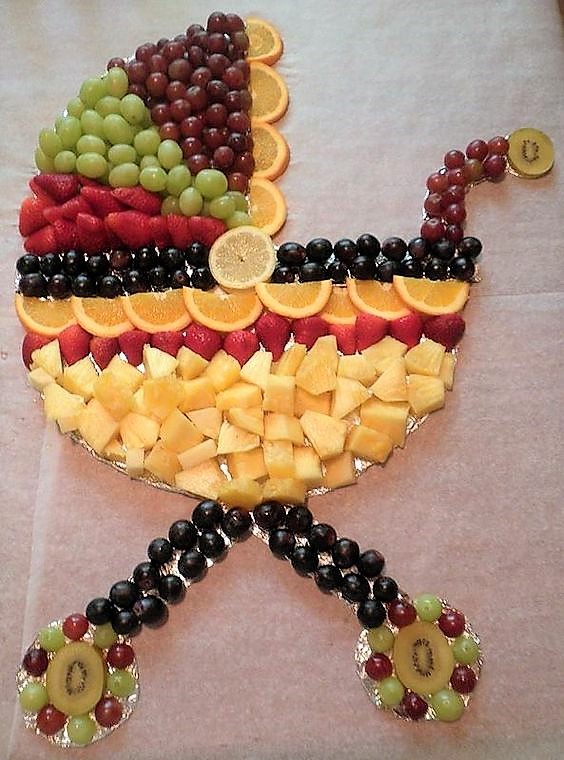Disadvantages of commercial baby food
Commercial vs. Homemade Baby Food—How To Provide All The Essential Nut
Parents want to ensure they provide all the essential nutrients for their children‘s growth and development—either through homemade or commercial baby food. There isn’t a “best” option though, both have advantages and disadvantages, which usually depend on parents’ individual needs. That’s why, it’s really important for you as a parent to understand their differences, in order to make informed decisions. This article will hopefully ease the decision process for you!
Many parents think that (1) homemade baby food is always the best option, that (2) commercial baby food is unhealthy, as well as (3) homemade baby food is always more nutritious. However, there are many factors that determine whether these common beliefs are true or not.
Around 6 months of age, breast milk becomes insufficient to meet all the energy and nutritional requirements of your child due to the accelerated growth during this stage. That’s why, it becomes very important to start complementary feeding and offer additional nutrients to contribute to her/his growth and development. Regardless of whether these are provided through store-bought products or homemade preparations, what’s really important is to offer foods with a high nutritional density (i.e., foods high in vitamins, minerals, complex carbohydrates, lean protein, and healthy fats) and in the necessary quantities.
Therefore, you as a parent should choose what best suits your needs as a family. Both, commercial and homemade food have advantages and disadvantages. But getting to know them well, will certainly help you evaluate what to choose depending on the specific situation.
PROS of homemade baby food
- Money—It can be cheaper.
- Origin—You probably know where is comes from.
- Ingredients—You get to choose what to add.
- Creativity—It gives you the opportunity to combine and experiment with different foods, textures, colors, and flavors.

CONS of homemade baby food and solutions/alternatives
- Time-consuming—Preparing your own food (e.g., chopping, steaming, blending) usually means extra time in the kitchen. Try to → Lean about batch cooking/meal-prep techniques. It will help you save time and money.
- Shelf life/storage time—More likely to spoil quicker. Try to → Learn about food storage and refrigeration times. It will help you keep homemade foods safe for longer periods of time, as well as avoid growth of bacteria! Why don't you stick a list on the fridge with storage and refrigeration times?
- Safety—Homemade food doesn’t have safety and quality checks.Try to → Learn basic hygiene standards in the kitchen (e.g., wash your hands, avoid cross contamination, cook animal source foods such as meat, poultry and eggs thoroughly) will help you keep your baby’s food safe from dangerous bacteria.

- Nutrient loss—Loss of nutrients in foods—especially vegetables—can highly depend on how you cook these, thus lowering their nutritional value.Try to → Select cooking methods that result in less mineral loss (e.g., stewing, or blanching) or using instruments in the kitchen such the Olababy Steam Bowl, can help you to retain more nutrients in food. This BPA-free Bowl is made from silicone, and acts as both a steamer and serving bowl, combined into one, allowing you to prepare more nutritious homemade baby food.
PROS of commercial baby food
- Time saver—If you are a busy parent this might be a good alternative for you.
- Creativity—Buying some baby foods doesn’t mean that you can’t combine these with other homemade preparations and create interesting and nutritious recipes.

- Longer shelf-life—If you don’t open the product there is a good chance that you can keep it for a longer period of time.
- Regulatory requirements—These are definitely more rigorous!
- Fortified—It has important added nutrients, which help boost your child’s growth and development.
CONS of commercial baby food and solutions/alternatives
- Cost—It can be more expensive.Try to → Consider this option when you don’t have time to cook or are tired, because you had a busy week at work.
- Contamination—Some packaging can be environmentally unfriendly and produce unnecessary waste.Try to → Buy eco-friendly commercial baby food products, or recycle/reutilize its packaging.

- Heavy metals—Although regulations are strict, some reports have confirmed the presence of heavy metals in some baby products.Try to → Offer your little one a wide variety of different foods (e.g., grains, fruits, vegetables, animal sources).
- Confusing labels—Sometimes you don’t know what to pay attention to on food labels. Try to → Learn how to read labels. See guide below:
In conclusion, (1) homemade baby food isn’t always the best option, (2) commercial baby food isn’t always unhealthy, and (3) homemade baby food isn’t always more nutritious. It always depends on your particular situation and the specific food or preparation you select. However, if you are still hesitant and are trying to decide whether or not to buy commercial (packaged) food for your baby and family, it could be useful to evaluate its nutritional content, paying special attention to:
- The list of ingredients on the label: The first ingredient represents the largest amount that the products contained when manufactured, and the last represents the smallest one.

- The nutrition facts: Look for products that contain key nutrients such as iron, zinc, calcium, omega 3, vitamin D, A and C.
- The health claims: Although many baby food products are marketed as “no added sugar”, many of them are naturally high in sugar, and the fact that they don’t have added sugars doesn’t mean they’re healthy. Banana puree, grape sugar and apple puree or juice concentrate, are also a sugar form. However, this doesn’t mean you can’t offer products that contain this sugar forms to your child. Maybe you just have to get a little bit more creative and come up with a simple homemade preparation that includes a smaller amount of this store-bought products—then it will be definitely healthier.
References:
Food labels: Nutritional information and ingredients. Raising Children. Retrieved March 12, 2021, from https://raisingchildren.
net.au/teens/healthy-lifestyle/nutrients/food-labels
How to Understand and Use the Nutrition Facts Label. Food and Drug Administration (FDA).Retrieved March 12, 2021, from https://www.fda.gov/food/new-nutrition-facts-label/how-understand-and-use-nutrition-facts-label
Complementary feeding - Global. (2019, December 20). World Health Organization. https://www.who.int/health-topics/complementary-feeding#tab=tab_1Global Regulatory Requirements for Baby Food. (n.d.). SGS. Retrieved April 22, 2021, from https://www.sgs.com/en/news/2015/12/global-regulatory-requirements-for-baby-food
Lee, S. (2017, December 12). Effect of different cooking methods on the content of vitamins and true retention in selected vegetables. Food Science and Biotechnology. https://link.springer.com/article/10.1007/s10068-017-0281-1?error=cookies_not_supported&code=a2485e73-4db5-4957-9ffb-e80330710e9b
McCarthy, C. (2021, March 2). Heavy metals in baby food? What parents should know and do.
Harvard Health Blog. https://www.health.harvard.edu/blog/heavy-metals-in-baby-food-what-parents-should-know-and-do 2021030522088#:%7E:text=A%20report%20from%20the%20US,lead%2C%20cadmium%2C%20and%20mercury.
Okeyo, D. (2018). Impact of Food Fortification on Child Growth and Development during Complementary Feeding. Annals of Nutrition and Metabolism 2018, Vol. 73, Suppl. 1 - Karger Publishers. https://www.karger.com/Article/FullText/490087
Food industry marketing sugary baby foods as healthy, misleading consumers - Obesity Policy Coalition. (n.d.). Food Industry Marketing Sugary Baby Foods as Healthy, Misleading Consumers. Retrieved April 22, 2021, from https://www.opc.org.au/media/media-releases/opc_food-industry-marketing-sugary-baby-foods-as-healthy-misleading-consumers.html#:%7E:text=Processed%20baby%20foods%20that%20are,one%20in%20five%20baby%20foods.
Related Blog Posts
How to Stop Baby from Scratching
Fall Flavors: Recipes for the Whole Family
Family Fun Night
Bought vs Homemade Baby Food – Pros and Cons – Aster & Oak
Baby food is almost as varied and flavorful as adult food now — anything that can be pureed can be put in a jar and called baby food. Once our little one has reached the food stage at around six months, it’s time to make a decision. Should you buy your baby food or make it at home? We’ve assembled the pros and cons of each option to help make the choice between Bought vs Homemade Baby Food a bit easier for you.
Once our little one has reached the food stage at around six months, it’s time to make a decision. Should you buy your baby food or make it at home? We’ve assembled the pros and cons of each option to help make the choice between Bought vs Homemade Baby Food a bit easier for you.
Store Bought Baby Food — Pros and Cons
Store-bought baby food may be the food of choice for most parents because of its convenience and variety — there’s an enormous wall of it in nearly every grocery store, and it comes in every flavor imaginable.
Pros
- Convenience — You don’t have to worry about refrigeration (before you open the jar) or Tupperware with loose lids making a mess in your bag.
- Portability — It’s easy to store and carry jars of baby food in your diaper bag or purse. All you need is a spoon, and it’s dinner time for baby.
Cons
- Cost — In the long run, jarred baby food ends up costing more than the homemade alternatives.

- Waste — Disposable packaging can be wasteful, and if it’s not cleaned out well, it’s often not recyclable either.
- Preservatives — The only ‘preservative’ you should see in baby food is Vitamin C, but jarred food can contain a variety of listed or unlisted preservatives to make the food shelf stable.
- Contaminants — Contaminants can make their way into store-bought baby foods and can even show up in the water used to make it. In 2014, the Environmental Defense Fund found lead in some packaged baby foods.
Jarred baby food can be a great tool if you’re traveling or away from home, but is it really the best option for every meal?
Homemade Baby Food — Pros and Cons
You can make almost anything that you’re eating into baby food as long as you don’t mind skipping the salt and other seasonings.
Pros
- You Know What’s in the Food — Nothing goes into your homemade baby food that you’re not aware of.

- Cost — Overall, making your baby food ends up being less expensive, even if you have to buy a blender or food processor to get started.
- Variety — You can make up food combinations to cater to your infant’s tastes and nutritional needs without having to open multiple jars.
Cons
- Safety — Jarred baby food is pasteurized, killing off any bacteria that might appear in the finished product. Homemade baby food is not.
- Storage — Homemade baby food has no preservatives, so it doesn’t keep as well. It can be frozen, but should only be made and stored in small batches.
If you’ve got the time and the inclination, making your baby food can be an excellent option for providing your infant with healthy and organic food.
Making Your Own — Tips and Tricks
If you’ve never tried making your own baby food, here are a few tips and tricks to get you started:
- Steam or microwave fruits and veggies to soften them while still retaining most of their nutrients.
 Boiling works too, but many of the nutrients can leach out into the cooking water.
Boiling works too, but many of the nutrients can leach out into the cooking water. - Don’t add anything — you don’t need any extra flavors or additives. Your baby’s tastes are very bland at the moment, plus most of these flavor additives also add salt or sugar which are unhealthy for your baby.
- Mash. Add small amounts of water or breast milk and mash the fruits or vegetables until they’re smooth. You can also spin these foods up in a blender or food processor to get a smooth, even texture.
That’s all there is too it. Baby food is pretty simple. If you’re making up large batches of food at once for convenience, pour the extra food into an ice cube tray to make individual sized freezer portions. Once frozen, they can be transferred into a zip lock bag for storage for up to a month.
Homemade Baby Food Recipes
If you’re just getting started with baby food, here are a few homemade recipes to get you going.
Stage 1 — These infant foods should include only one ingredient, not including the water or breast milk used to dilute the mash. Not only does it make it easier to introduce new foods to the baby, but it also makes it easier to determine if your child has any food allergies that you need to be concerned about.
Not only does it make it easier to introduce new foods to the baby, but it also makes it easier to determine if your child has any food allergies that you need to be concerned about.
Avocado Mush — All you need to do is halve your avocado, scoop out the meat of the fruit and mash it until smooth. Avocados are very soft anyway, so there’s no need to do anything extra to it.
Banana Mush — Same as the avocado. Peel, mash, serve.
Applesauce — Peel your apples and cut them into chunks. Boil or steam until tender, then mash or blend until smooth.
Stage 2 — This is when you can start getting a little more adventurous with the food combinations, but you still don’t want to add any salt or additional flavors. Start combining fruits and vegetables like:
- Apples and bananas
- Apples and plums
- Bananas and blueberries
- Apples and carrots
- Peaches and sweet potatoes
- Avocado and peaches
The list is endless. Just make sure you’re using foods that you’ve already introduced the baby to in case of food allergies.
Just make sure you’re using foods that you’ve already introduced the baby to in case of food allergies.
Stage 3 — Now that your baby is used to a variety of different foods, it’s time to start looking into chunkier foods. You can start introducing finger foods here as well.
The food you feed your baby, much like the rest of your parenting decisions, is a personal choice. If you have the time, making homemade food can be a healthier alternative to store-bought baby food, but the jarred stuff isn’t all bad.
Pluses and minuses of a private kindergarten
Wonderful moments of giving birth and raising a child overshadow the mother with the quick end of maternity leave. And now, the day is not far off when it is time for a young mother to go to work. Then the question of choosing a kindergarten for your beloved baby becomes.
Only being in the society of peers, the child learns to communicate, work in a team, realizes himself.
Kindergarten has a beneficial effect on the development of the child, his socialization. nine0003
nine0003
Since public institutions cannot accommodate a large number of children, it has become popular today to open private gardens or mini-gardens.
Parents should carefully consider the choice of a kindergarten, analyze all aspects of public and private education. To understand such a sensitive issue, you need to know all the advantages and disadvantages of both types of institutions.
Private kindergarten is always a modern, cozy, warm building, where there is room for the right number of children. The territory is always well-groomed, with lush vegetation, with playgrounds. But, it is worth considering that even in a private kindergarten there are more children than expected. There are no playgrounds for each age group, so everyone can play together. And in some kindergartens, children have to be transferred across the road to the park, where walks will be full of dangers: homeless animals, the roadway, dangerous garbage. And this is not a complete list of unforeseen situations. nine0003
nine0003
Meals in an individual kindergarten
Food is an indisputable advantage of a private kindergarten. Since there are a small number of children, food is organized similar to homemade. If the garden is good, then there will be an opportunity to choose a dietary food for a child with allergies.
One of the disadvantages of food is its high price, because you have to pay extra for variety. The second not very good point is the possibility of ordering food in any restaurant. Different chefs cook differently, so children do not always like this kind of food. nine0003
Recruitment is also worth mentioning.
A private company hires workers with experience who can skillfully organize secure moments with children. Most often, the age of educators is young. Children have a special trust in such teachers.
But, not always the number of certificates and merit speaks of the kindness and sensitivity of the educator. Recruitment psychologists are trying to fix this problem.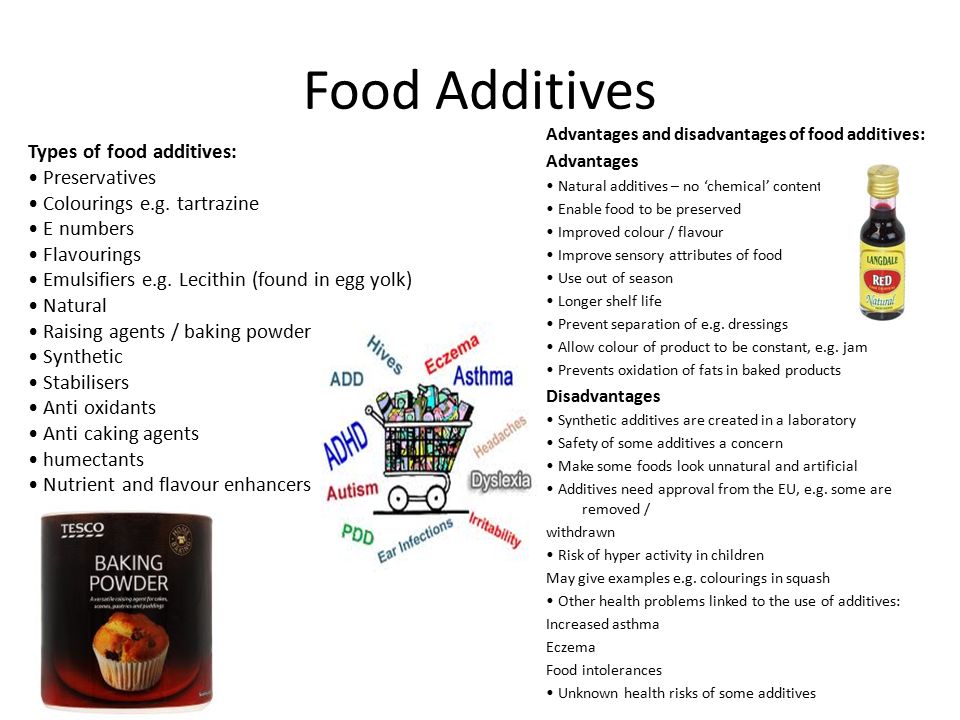 Test methods help to determine the personal qualities of a person and his attitude towards children. nine0003
Test methods help to determine the personal qualities of a person and his attitude towards children. nine0003
It is worth talking about walks in more detail
A good quality is that compared to the state kindergarten, there are several times fewer children, which means that it is faster to dress them for a walk. Children do not stand long in clothes in a hot room.
However, in order to reduce diseases in a commercial kindergarten, they do not always want to take children out for daytime and evening walks. In public gardens, people walk even in the most inclement weather.
How does the financial situation of a private kindergarten
The payment for a private preschool is constant and that is good. Most often there is a fixed price for a subscription, and meals are paid separately. Many kindergartens have a bonus system, for example, if two children from the same family visit the kindergarten.
The disadvantages include a separate payment for additional classes and a variety of circles. And yet, they often practice a one-time fee for several months, which may not be returned, even if the child has been in the garden for only a few days. No recalculation for missed days. nine0003
And yet, they often practice a one-time fee for several months, which may not be returned, even if the child has been in the garden for only a few days. No recalculation for missed days. nine0003
Pluses and minuses in the development of kindergarten
Developmental activities and all-round development of any child are an absolute plus. Private gardens use innovative methods, computer technologies, have a large amount of visual and didactic material. I am also pleased with the large selection of educational toys, which is limited in the state garden.
The disadvantage is the excessive workload of children with many methods, they have very little time, and sometimes they don’t have it at all, for independent games. nine0003
For many parents, a strong argument in favor of a private garden is the constant monitoring of the educational process and conditions, using a video camera and viewing in real time.
A few simple recommendations will help parents pay attention to the nuances when choosing a preschool institution.
- Start your selection of kindergartens near your home.
- It is worth looking at all the documents, the license, studying the contract. nine0053 You should definitely ask questions about the staff, methods of working with children, which school you are preparing for: private or public.
- Learn about hygiene standards, inspect the kitchen, talk to other parents, get their opinion.
If one of the points makes you confused, look for another kindergarten. This precaution will help avoid mistakes, and create excellent conditions for the development of your baby.
It should also be taken into account that private gardens are practically not subject to any control, they are not responsible for their wards, and this item can block all the undeniable advantages of a private garden. nine0003
Commercial kindergartens: advantages and disadvantages
In recent years, in addition to state kindergartens, commercial preschool institutions have also appeared. Many parents are interested in this option. Indeed, private kindergartens provide great opportunities for the development of children.
Many parents are interested in this option. Indeed, private kindergartens provide great opportunities for the development of children.
Advantages of a private kindergarten
Many parents seriously think about a private nursery or a kindergarten at the moment when they find out that the queue for a public kindergarten must be taken immediately after the birth of the baby. nine0003
Commercial kindergartens, on the contrary, resolve the issue quite quickly, literally in a few days. There is practically no need to stand in line for enrollment. It is enough to bring a certificate from the pediatrician that the child is healthy, take a few tests, conclude an agreement and that's it.
The schedule of work in private gardens is adjusted to the schedule of parents. If the mother is delayed at work or in a traffic jam, she will not have to worry, the child will calmly wait for her arrival.
Municipal kindergartens are governed by law and enroll children mainly from the age of three.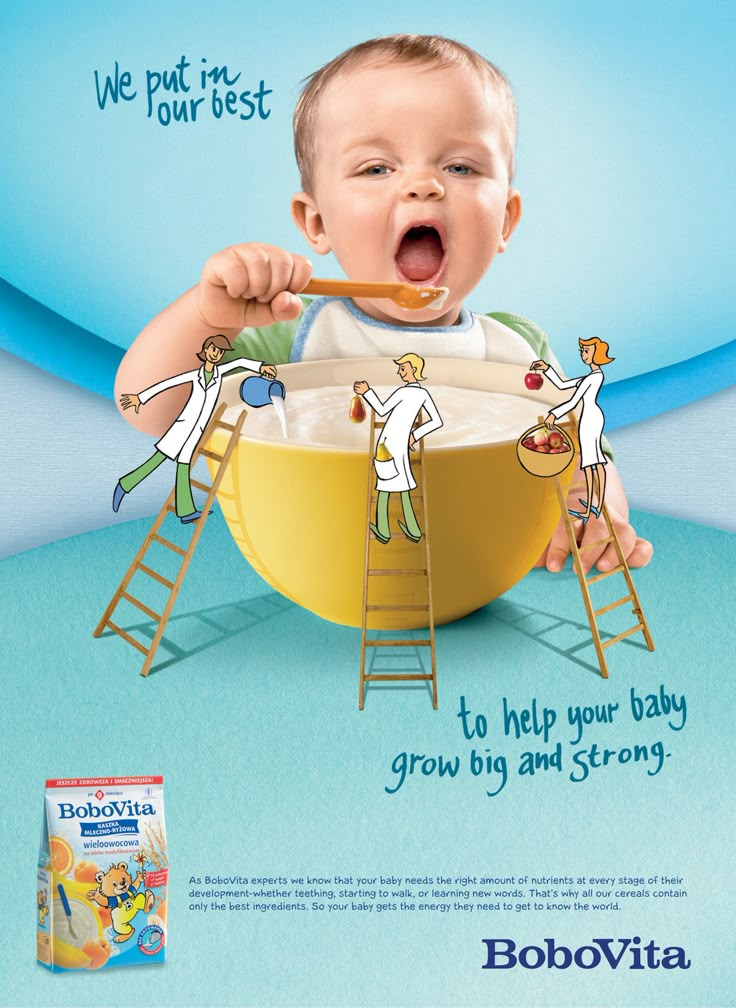 The opportunity to send a child to a kindergarten earlier is provided only by commercial institutions. nine0003
The opportunity to send a child to a kindergarten earlier is provided only by commercial institutions. nine0003
Mom will always be calm for the baby: the size of groups in private kindergartens is limited to 7-10 children, and educators have time to devote time to each child. For babies who are not yet able to eat and dress themselves, it is very important to be under constant supervision. One-year-old children here will be fed from a spoon, potty trained, and gradually taught to dress.
In a private kindergarten, food is of better quality, usually cooked.
Private gardens in many cases adhere to some direction, and they can be attributed to one of the following types: nine0003
- general developing kindergartens with different directions: sports, theater, art, music;
- centers for the development of kids with computer classes, an art studio, a children's theater, a sports and recreation complex.
Dangers of public places: how to stay active and not get infected?
Life hacks for personal protection against viruses and bacteria in public and crowded places.
Best Educators and Activities with Children
Educators in commercial kindergartens are subject to a rigorous selection process. It is important for the administration of kindergartens that children go to kindergarten with joy, and parents are calm for them. Therefore, teachers are well trained, have extensive experience, and are able to conduct a variety of classes. This applies to both physical and educational and creative development.
Classes are held in a playful way, depending on the age of the children. The main attention is paid to intellectual and creative development, children are taught various drawing techniques, develop fine motor skills through modeling, finger gymnastics. Music lessons are a must. nine0003
The teacher should be able to constantly switch the attention of the child in the process of getting used to kindergarten, interest him in toys, and involve him in interesting games. Due to the small number of children in the group, everyone has the opportunity to pay attention, play, talk, teach something. In a nursery, children learn self-care skills faster.
In a nursery, children learn self-care skills faster.
Attention is the most important thing that teachers in paid kindergartens can give. This is an opportunity to quickly respond to children's quarrels over toys, educate, explain how to behave, repeat or learn poems and songs with children more often and more than they do in municipal kindergartens. Accordingly, children develop better speech, they gain more knowledge and skills. nine0003
For games with small groups of children, the teacher also has more time, so children in commercial kindergartens adapt faster and get bored less without their mothers.
Complete activities for older children
In older groups, classes are held to develop non-standard thinking, mathematical abilities. By agreement with the parents, they are introduced to the English language. Small groups provide an opportunity for an individual approach to each child and in learning, so children after private kindergartens are usually well prepared for school, self-confident, easily adapt to new conditions and unfamiliar groups. nine0003
nine0003
Private kindergartens are not as constrained in terms of funds as public institutions. Therefore, children have at their disposal wonderful playrooms with good furniture and equipment. Many kindergartens have a swimming pool.
Kindergarten can also be a language focus, where parents can choose to study foreign languages: English, Spanish, Chinese, French.
Some kindergartens offer a wide range of sports clubs: karate, yoga, gymnastics, swimming. nine0003
Sometimes, for better socialization of children in the kindergarten, groups of different ages are organized. Invited speech therapists, psychologists, defectologists and other specialists work with children.
What disadvantages can parents see
The disadvantages of commercial kindergartens primarily include the high cost of this service, which makes a private preschool inaccessible to most of the population.
Another important disadvantage is the not always convenient location of the chosen children's institution.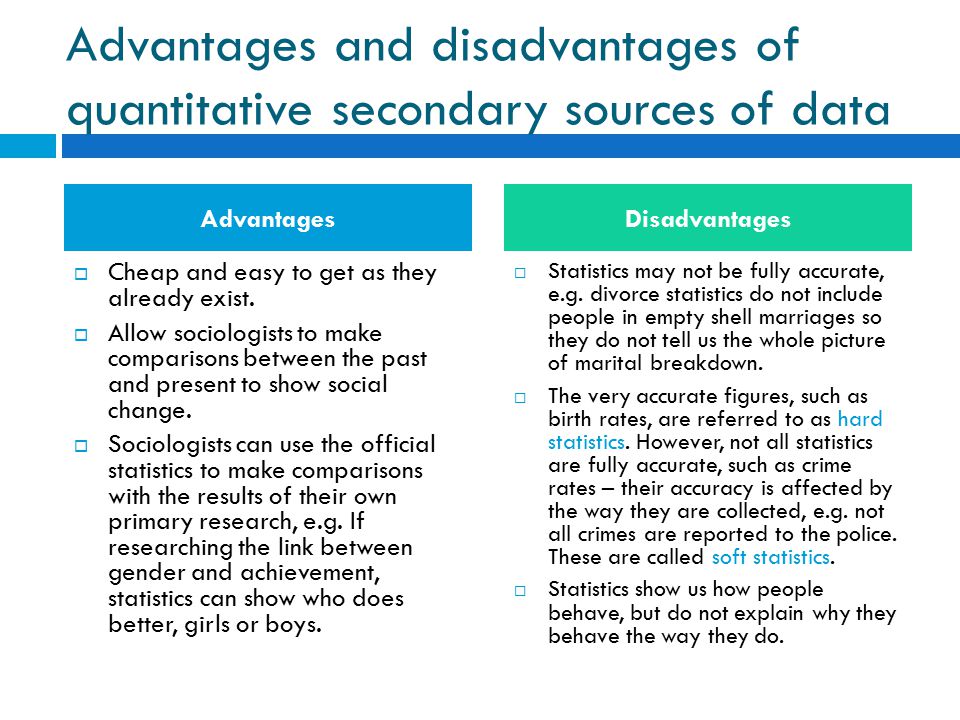 Getting through the morning traffic for a long time will be an excruciating test for the baby. He will get to the kindergarten tired and naughty. It is believed that the optimal time required to get to the kindergarten should not exceed 20 minutes. nine0003
Getting through the morning traffic for a long time will be an excruciating test for the baby. He will get to the kindergarten tired and naughty. It is believed that the optimal time required to get to the kindergarten should not exceed 20 minutes. nine0003
Often the advantage of a commercial garden turns into a disadvantage if the staff overloads the children with various activities.
The disadvantages of commercial kindergartens include the fact that nursery groups may not walk during the day. This may be due to the lack of space or the fact that it is very difficult to dress and undress 10 children who do not know how to dress themselves. While the teachers are dressing some, others are waiting and sweating, and then on the street they catch a cold, often get sick. They also infect each other in a group, which is why in many private kindergartens in younger groups they refuse to go for walks. nine0003
When deciding on the choice of a commercial kindergarten, parents should see the relevant documents from the leadership of the kindergarten, get to know the teachers.


